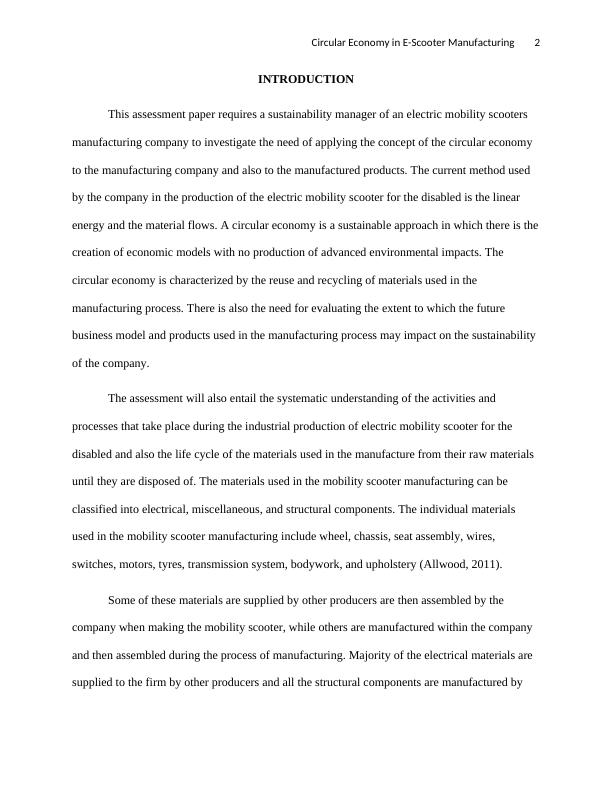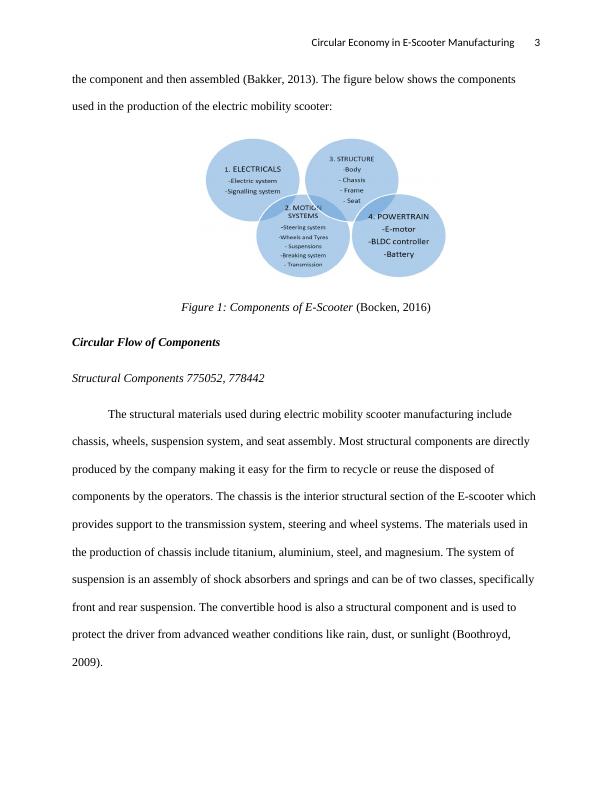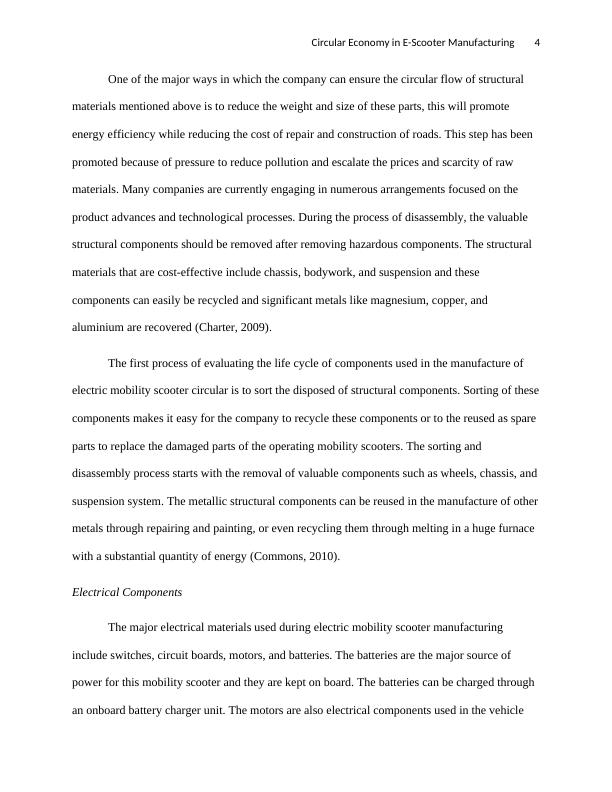Circular Economy in E-Scooter Manufacturing
This coursework requires a systematic understanding of industrial organizations and their environmental impacts, as well as assessment and analysis techniques to reduce energy consumption. It also focuses on meeting consumer demand while minimizing life-cycle energy consumption in a globalized industrial context.
15 Pages4065 Words285 Views
Added on 2023-06-09
About This Document
This research paper discusses the need for circular economy in electric mobility scooter manufacturing to promote sustainability. It evaluates the life cycle of materials used in the manufacturing process and suggests short-term and long-term steps to promote recycling, disposal, reuse, and reduction of structural, electrical, and miscellaneous components. The paper also discusses the impact of the future business model and products on the sustainability of the company.
Circular Economy in E-Scooter Manufacturing
This coursework requires a systematic understanding of industrial organizations and their environmental impacts, as well as assessment and analysis techniques to reduce energy consumption. It also focuses on meeting consumer demand while minimizing life-cycle energy consumption in a globalized industrial context.
Added on 2023-06-09
ShareRelated Documents
End of preview
Want to access all the pages? Upload your documents or become a member.
Sustainability 8 Manufacturing of Electric Mobility Scooter for the Disable
|18
|3612
|341
Research Paper on Circular Economy (PDF)
|19
|3795
|531
Electric Mobility Scooter for the Disabled Assignment pdf
|18
|3559
|47
System Sustainability 20 Low IMPACT Manufacturing of Electric Mobility Scooters For The Disable
|21
|3920
|120
Sustainable Industrial System - Doc
|19
|3618
|34
Circular Economy of Electronic Motorcycles
|16
|4458
|384




